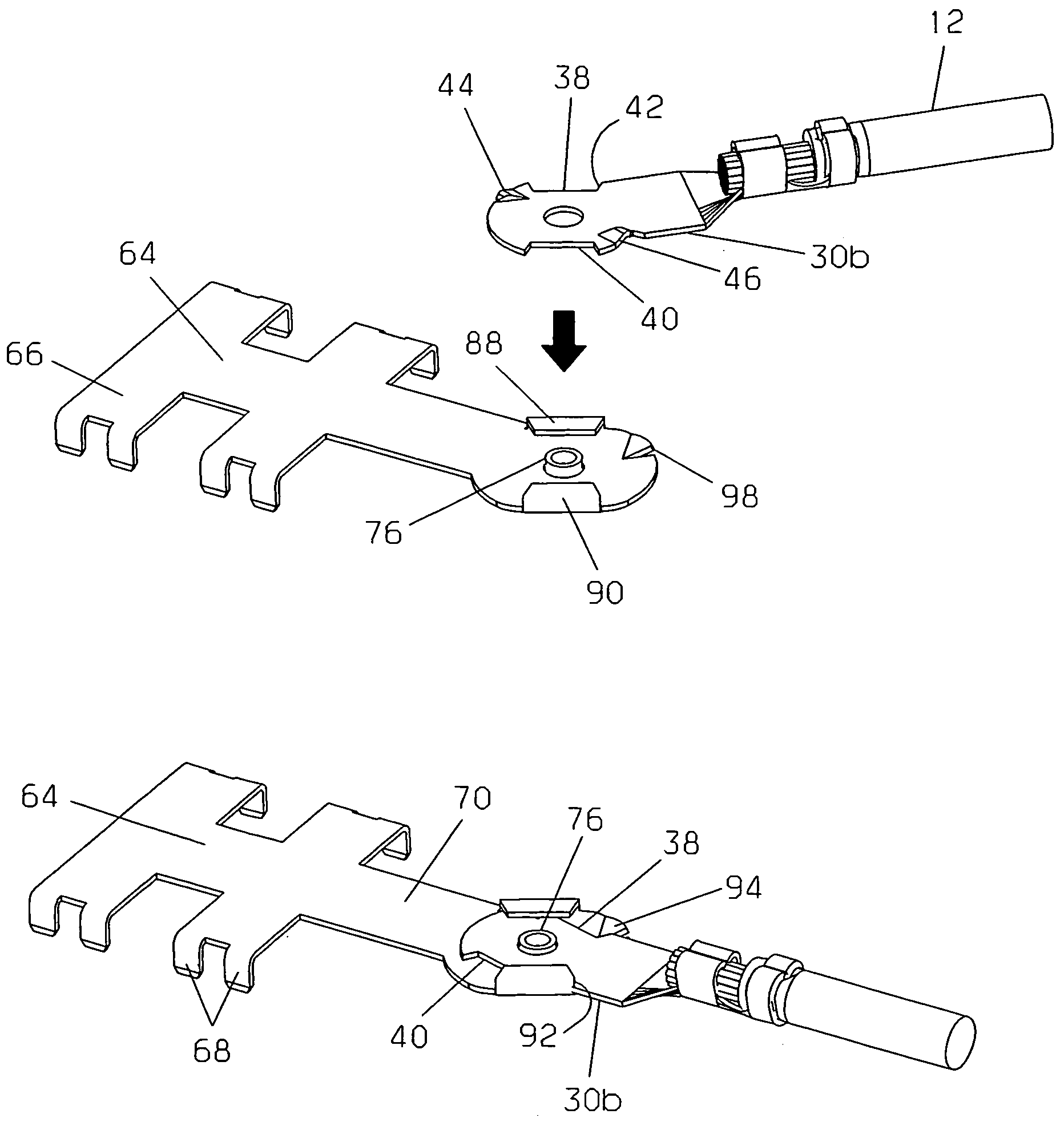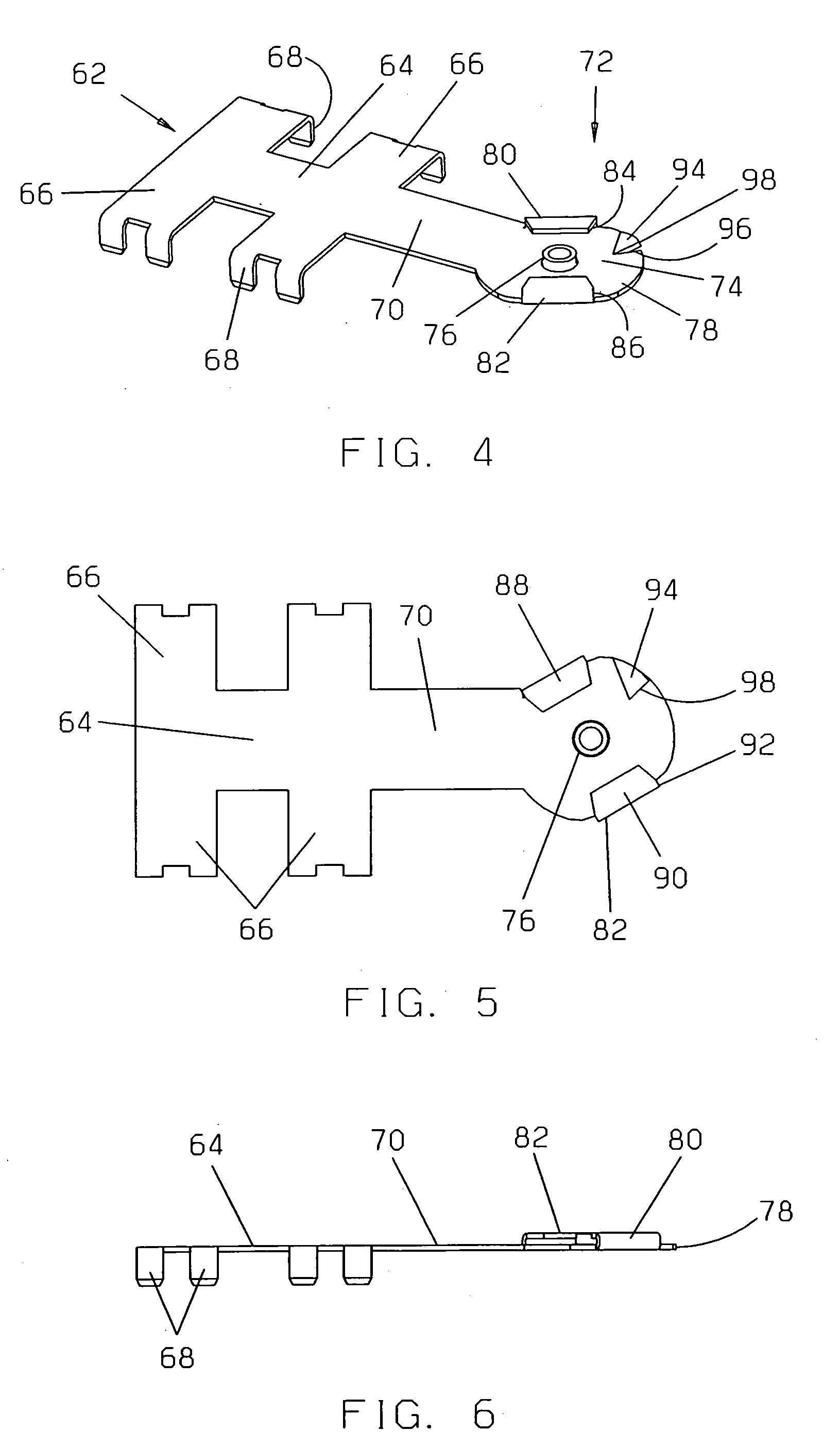Twist-lock terminal connection system
a terminal connection and twist lock technology, applied in the field of high current terminals, can solve the problems of electrical arcing, loss of contact, other undesirable events, etc., and achieve the effects of reducing labor, increasing electrical contact surface area, and reducing labor costs
- Summary
- Abstract
- Description
- Claims
- Application Information
AI Technical Summary
Benefits of technology
Problems solved by technology
Method used
Image
Examples
Embodiment Construction
[0027]Referring now to FIGS. 1–3, a first or harness-side terminal of an electrical connection system, for attachment to a high power cable or wire harness 12, is illustrated. The harness has an insulative jacket 14 surrounding a conductor or conductors 16. The conductors 16 are exposed at an end 18 of the harness. A harness-side terminal 20 has a first, wire-connect section 22 including two sets of tabs. An outer set of tabs 24 is for crimping around the insulative jacket 14 of the cable or harness 12 to secure the terminal and harness together. An inner set of tabs 26 is for crimping around the exposed conductor 16 of the cable to make electrical contact between the wire and terminal. A relatively flat, straight second or stem section 28 of the terminal integrally extends from the wire-connect section. The stem section has two parallel, opposite sides 30a and 30b and makes an integral junction with a third, mating section 32.
[0028]The third or mating section 32 of the harness-side...
PUM
 Login to View More
Login to View More Abstract
Description
Claims
Application Information
 Login to View More
Login to View More - R&D
- Intellectual Property
- Life Sciences
- Materials
- Tech Scout
- Unparalleled Data Quality
- Higher Quality Content
- 60% Fewer Hallucinations
Browse by: Latest US Patents, China's latest patents, Technical Efficacy Thesaurus, Application Domain, Technology Topic, Popular Technical Reports.
© 2025 PatSnap. All rights reserved.Legal|Privacy policy|Modern Slavery Act Transparency Statement|Sitemap|About US| Contact US: help@patsnap.com



